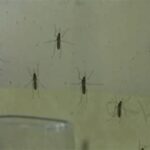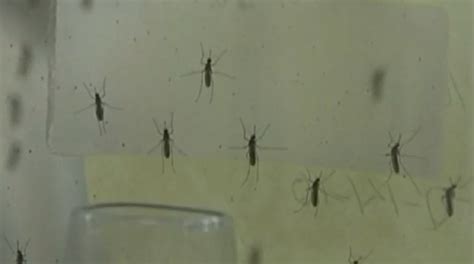
Using too much laundry detergent isn’t just a waste of money; it could be harming your washing machine and leaving your clothes dirtier than before, according to experts. Despite the temptation to add extra detergent for heavily soiled items, the common practice often results in residue buildup, ineffective rinsing, and even mold growth.
Many consumers significantly overestimate the amount of detergent needed for each load, often filling detergent cups to the maximum line or beyond. This stems from a misconception that more detergent equals cleaner clothes. In reality, high-efficiency (HE) washing machines, designed to use less water, require far less detergent than older models. “People are using way too much detergent, and that hasn’t changed much over the years,” says Laura Johnson, a research scientist at LG Electronics.
The primary issue with detergent overuse is that washing machines, especially HE models, struggle to rinse it all out. The excess detergent leaves behind a sticky residue on clothes, trapping dirt and odors. This residue can also accumulate in the washing machine itself, creating a breeding ground for mold and mildew in areas like the dispenser drawer, rubber gaskets, and drum.
The telltale signs of detergent overuse include stiff or scratchy clothes, a lingering soapy smell even after washing, and a buildup of residue in the detergent dispenser or on the washing machine drum. Some individuals may also experience skin irritation from the detergent residue left on clothing.
Manufacturers have responded to this issue by modifying detergent packaging with clearer instructions and more precise measuring tools. However, consumer habits often lag behind these improvements.
The Downside of Overdoing It
The problems associated with using excessive laundry detergent are multifaceted:
- Residue Buildup: Over time, excess detergent accumulates on clothing fibers, making them stiff, dull, and prone to attracting more dirt. This can negate the benefits of washing, leaving clothes less clean than before.
- Ineffective Rinsing: HE machines use less water, making it difficult to completely remove large amounts of detergent during the rinse cycle. This results in detergent residue remaining on clothes.
- Machine Malfunction: The buildup of detergent in the washing machine can clog dispensers, hoses, and pumps, leading to costly repairs or premature failure of the appliance.
- Mold and Mildew Growth: Trapped moisture and detergent residue create a perfect environment for mold and mildew to thrive, particularly in the dispenser, gasket, and drum. This can lead to unpleasant odors and potential health concerns.
- Skin Irritation: Sensitive individuals may experience skin irritation, rashes, or allergic reactions from detergent residue left on clothing.
- Environmental Impact: Using more detergent than necessary contributes to water pollution, as these chemicals are released into the environment through wastewater.
- Wasted Money: Overusing detergent is a waste of money, as the excess provides no additional cleaning benefit and simply gets washed away.
The Right Amount: Less Is More
The amount of detergent needed depends on several factors, including the size of the load, the level of soil, and the water hardness. However, a general guideline is to use significantly less than what is typically recommended on detergent packaging.
For HE machines, 1 to 2 tablespoons (approximately 30-60 ml) of concentrated detergent is usually sufficient for a standard load. For traditional top-loading machines, 1/4 cup (approximately 60 ml) may be adequate. Always refer to the washing machine manufacturer’s instructions for specific recommendations.
Liquid detergents are generally more effective at lower temperatures, while powdered detergents may be better for heavily soiled loads and stain removal. Detergent pods offer convenience but can sometimes lead to overuse if not properly measured.
Tips for Proper Detergent Usage
- Read the Label: Carefully read the detergent packaging and washing machine manual for recommended dosage instructions.
- Measure Accurately: Use the measuring cup or dispenser provided with the detergent to ensure accurate dosing. Avoid simply pouring detergent directly into the machine without measuring.
- Consider Load Size: Adjust the amount of detergent based on the size of the load. Use less detergent for smaller loads and slightly more for larger loads.
- Account for Soil Level: Heavily soiled clothes may require slightly more detergent, but avoid overdoing it. Pre-treating stains and soaking heavily soiled items can reduce the need for excessive detergent.
- Factor in Water Hardness: Hard water can reduce the effectiveness of detergent, requiring slightly more to achieve the desired cleaning results. Consider using a water softener or a detergent specifically formulated for hard water.
- Use HE Detergent: Always use detergent specifically formulated for HE machines, as these detergents produce less suds and are designed to rinse more effectively.
- Regularly Clean Your Washing Machine: Clean the washing machine regularly to remove detergent residue and prevent mold and mildew growth. Run an empty cycle with hot water and a cup of white vinegar or a washing machine cleaner. Clean the dispenser drawer and rubber gasket regularly.
- Rethink Pods: While convenient, pods can sometimes lead to overuse. If using pods, ensure they are appropriate for the load size and soil level. You may be able to cut the pod in half for smaller loads if the packaging permits and you can do so safely.
- Check for Residue: After washing, check your clothes for any signs of detergent residue, such as stiffness or a soapy smell. If residue is present, run an extra rinse cycle without detergent.
- Consider a Detergent Alternative: For those with sensitive skin or concerns about environmental impact, consider using detergent alternatives such as washing soda, soap nuts, or enzyme-based cleaners.
Expert Opinions
Laura Johnson from LG Electronics emphasizes the importance of using the correct amount of detergent. “People are using way too much detergent, and that hasn’t changed much over the years,” she notes. She also points out that excessive suds can actually reduce the cleaning effectiveness of the machine by preventing clothes from rubbing against each other properly.
Consumer Reports also advises consumers to err on the side of using less detergent, stating that “less is often more when it comes to laundry detergent.” They recommend starting with the smallest recommended amount and increasing it only if necessary.
The Environmental Angle
Overuse of laundry detergent contributes to environmental pollution. Many detergents contain phosphates, surfactants, and other chemicals that can contaminate waterways, harming aquatic life and ecosystems. By using only the necessary amount of detergent, consumers can reduce their environmental footprint and contribute to a more sustainable future.
Furthermore, the manufacturing and transportation of excessive amounts of detergent consume energy and resources, adding to the overall environmental impact. Reducing detergent consumption can help conserve these resources and minimize the carbon footprint associated with laundry.
The Bottom Line
Using too much laundry detergent is a common mistake that can lead to a variety of problems, from residue buildup on clothes to machine malfunctions and environmental pollution. By following the guidelines outlined above and using the correct amount of detergent, consumers can achieve cleaner clothes, extend the life of their washing machines, and reduce their environmental impact. Remember, less is often more when it comes to laundry detergent.
Frequently Asked Questions (FAQs)
1. How much laundry detergent should I really be using?
The amount of laundry detergent needed depends on several factors, including the type of washing machine (HE or traditional), load size, soil level, and water hardness. For HE machines, start with 1 to 2 tablespoons (30-60 ml) of concentrated detergent for a standard load. Traditional top-loading machines may require about 1/4 cup (60 ml). Always consult the detergent packaging and washing machine manual for specific recommendations. Adjust the amount based on the load size and soil level, using less for smaller or lightly soiled loads and slightly more for larger or heavily soiled loads. If you have hard water, you might need a bit more detergent or a water softener.
2. What happens if I use too much detergent?
Using too much laundry detergent can lead to several problems. Excess detergent can leave a sticky residue on clothes, making them stiff, dull, and prone to attracting more dirt. It can also cause ineffective rinsing, trapping dirt and odors. The buildup of detergent in the washing machine can clog dispensers, hoses, and pumps, potentially leading to costly repairs or machine failure. Additionally, trapped moisture and detergent residue can create a breeding ground for mold and mildew, leading to unpleasant odors and potential health concerns. Some individuals may also experience skin irritation from detergent residue left on clothing. Overusing detergent is also a waste of money and contributes to water pollution.
3. How do I know if I’m using too much laundry detergent?
Signs of using too much laundry detergent include:
- Stiff or scratchy clothes.
- A lingering soapy smell even after washing.
- Residue buildup in the detergent dispenser or on the washing machine drum.
- Excessive suds during the wash cycle.
- Skin irritation or rashes after wearing freshly washed clothes.
If you notice any of these signs, reduce the amount of detergent you’re using. Try running an extra rinse cycle to remove any remaining residue.
4. How can I clean detergent residue from my washing machine?
To clean detergent residue from your washing machine:
- Run an empty cycle with hot water and white vinegar: Add 1 cup (240 ml) of white vinegar to the detergent dispenser and run a hot water cycle. This helps to dissolve and remove detergent buildup.
- Use a washing machine cleaner: Follow the instructions on the washing machine cleaner packaging. These cleaners are specifically formulated to remove detergent residue and prevent mold and mildew growth.
- Clean the dispenser drawer: Remove the dispenser drawer and wash it with warm, soapy water. Use a brush to scrub away any residue.
- Wipe down the rubber gasket: Clean the rubber gasket around the washing machine door with a damp cloth to remove any residue or mold.
- Leave the door ajar: After each wash, leave the washing machine door ajar to allow air to circulate and prevent moisture buildup.
Regularly cleaning your washing machine will help to prevent detergent residue buildup and maintain its performance.
5. Are laundry detergent pods better or worse than liquid or powder detergents?
Laundry detergent pods offer convenience, but they also have potential drawbacks. Pods can sometimes lead to overuse if not properly measured, as they contain a pre-determined amount of detergent that may not be appropriate for every load. They also pose a risk to children and pets if ingested. Liquid detergents are generally more effective at lower temperatures and can be easily measured. Powdered detergents may be better for heavily soiled loads and stain removal. The best choice depends on your individual needs and preferences. If using pods, ensure they are appropriate for the load size and soil level. You may be able to cut the pod in half for smaller loads if the packaging permits and you can do so safely. Regardless of the type of detergent you choose, always follow the instructions on the packaging and use the correct amount.









